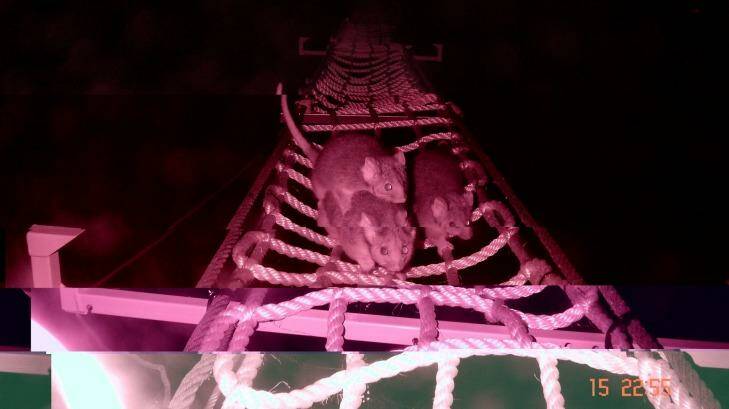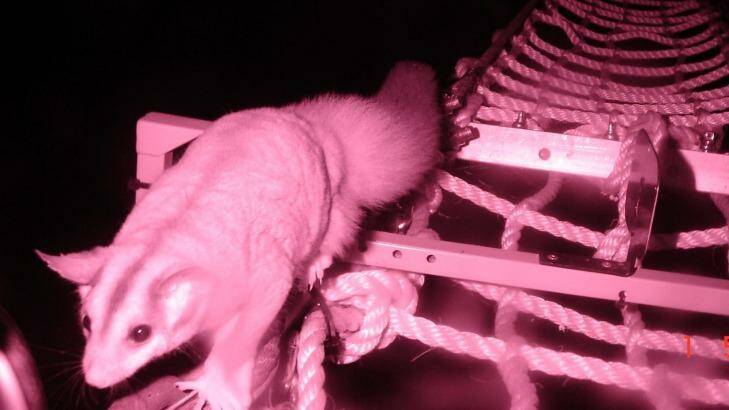





A four-lane interstate freeway is no barrier for amorous squirrel gliders in search of a roadside rendezvous, with new research showing "animal bridges" have resulted in a glider generation with parents from both sides of the bitumen.
The results of a study by researchers from the Australian Research Centre for Urban Ecology is good news for the threatened species' gene pool, which was at risk of shrinking due to habitat loss and fragmentation.
The squirrel gliders were initially slow to use the three glider poles, which act like stepping stones, and two rope bridges that cross the Hume Highway between Seymour and Benalla in north-east Victoria.
But night cameras, genetic testing and microchipping have provided evidence that the bridges and stepping stones are working in the best possible way.
Cameras have filmed the squirrel gliders clambering across the bridges – with one piece of footage even capturing a glider family on the move.
Road ecologist Kylie Soanes from the Australian Research Centre for Urban Ecology said a scanner recorded the beginning and end of microchipped gliders' bridge crossing "like an e-tag".
Having microchipped around 400 gliders over 10 years, the age, gender and which side of the freeway the animal would normally live on was also known.
"This shows they are using the bridge as part of the habitat," Dr Soanes said. "It has opened up habitat on both sides of the road whereas before they were limited to one side."
But the most convincing evidence the structures were working were the results of the genetic testing which revealed that some young gliders were "Hume hybrids" – offspring with a parent from both sides of the road.
"If the freeway is separating families then obviously someone is crossing the road for that to happen," Dr Soanes said.
She said because of the land clearing that had occurred in north-east Victoria for farming and agriculture, all of the quality old trees containing hollows gliders liked to nest in were now found along roadsides. This made roadside habitat extremely valuable to the ecosystem and keeping it connected was vital.
"Unfortunately in this kind of landscape, if we can't keep the gliders near the roadsides we may not be able to keep them at all," she said.
The Hume Highway is used by about 10,000 vehicles a day, with a quarter of the traffic using the road at night when native mammals like the squirrel gliders are at their most active.
Dr Soanes said the cameras had been kept busy recording a variety of native animals using the rope bridges, including brushtail and ringtail possums, cockatoos and even a goanna.

